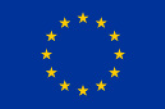Methodology







All involved actors explore and possibly revisit their ‘intervention theories’, in light of the experience gained. The exploration focuses on the relation between the expected and actually observed causal relationships between policy interventions and competences, asking questions such as: “did the intervention operate as expected? Which unanticipated factors constrained or facilitated the improvement of sustainability competences? Did the intervention and the evaluation process foster empowerment of the involved stakeholders, by helping them to better identify opportunities for and obstacles to desired changes towards sustainability?”. SCT/SCCs are used to organise this process of participatory reflection on whether and how the interventions operated as expected and whether the competences improved and why.


Funded by the European Union. Views and opinions expressed are however those of the author(s) only and do not necessarily reflect those of the European Union and European Education and Culture Executive Agencies (EACEA). Neither the European Union nor the granting authority can be held responsible for them.


